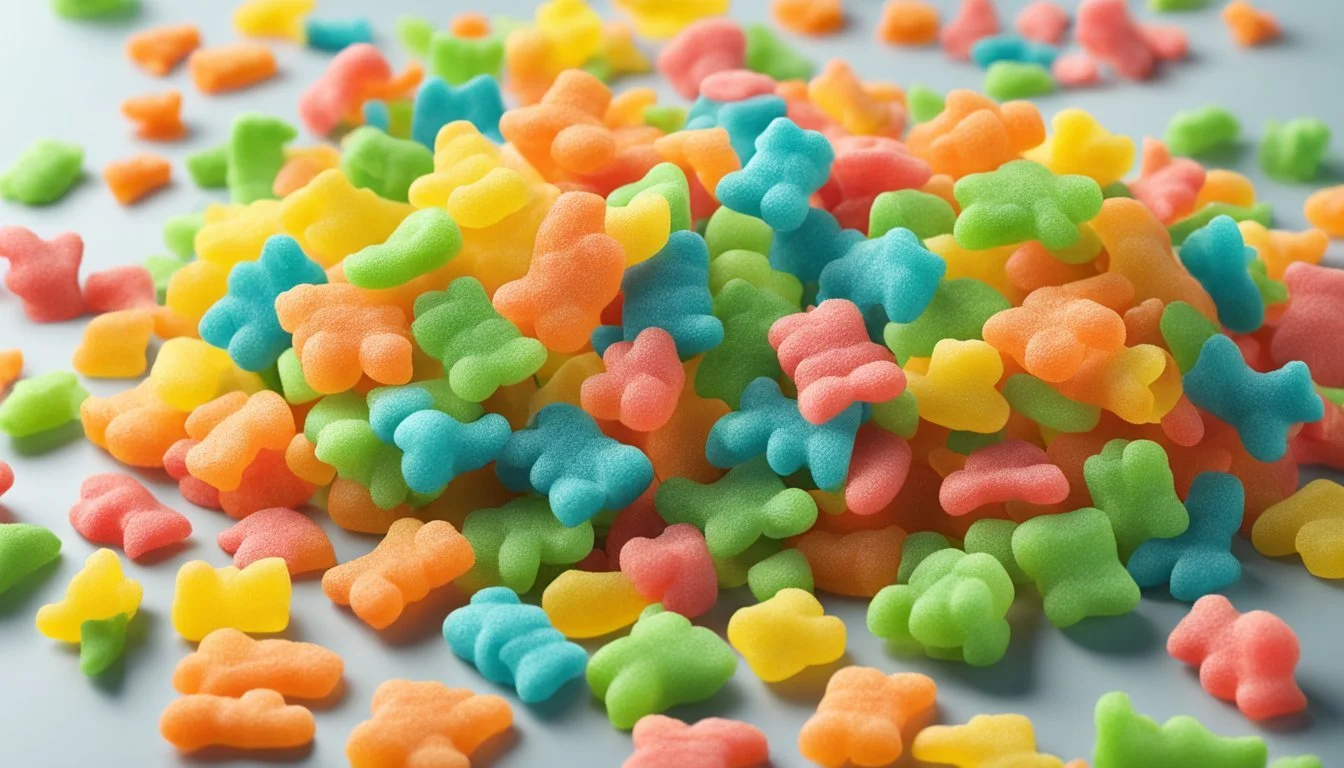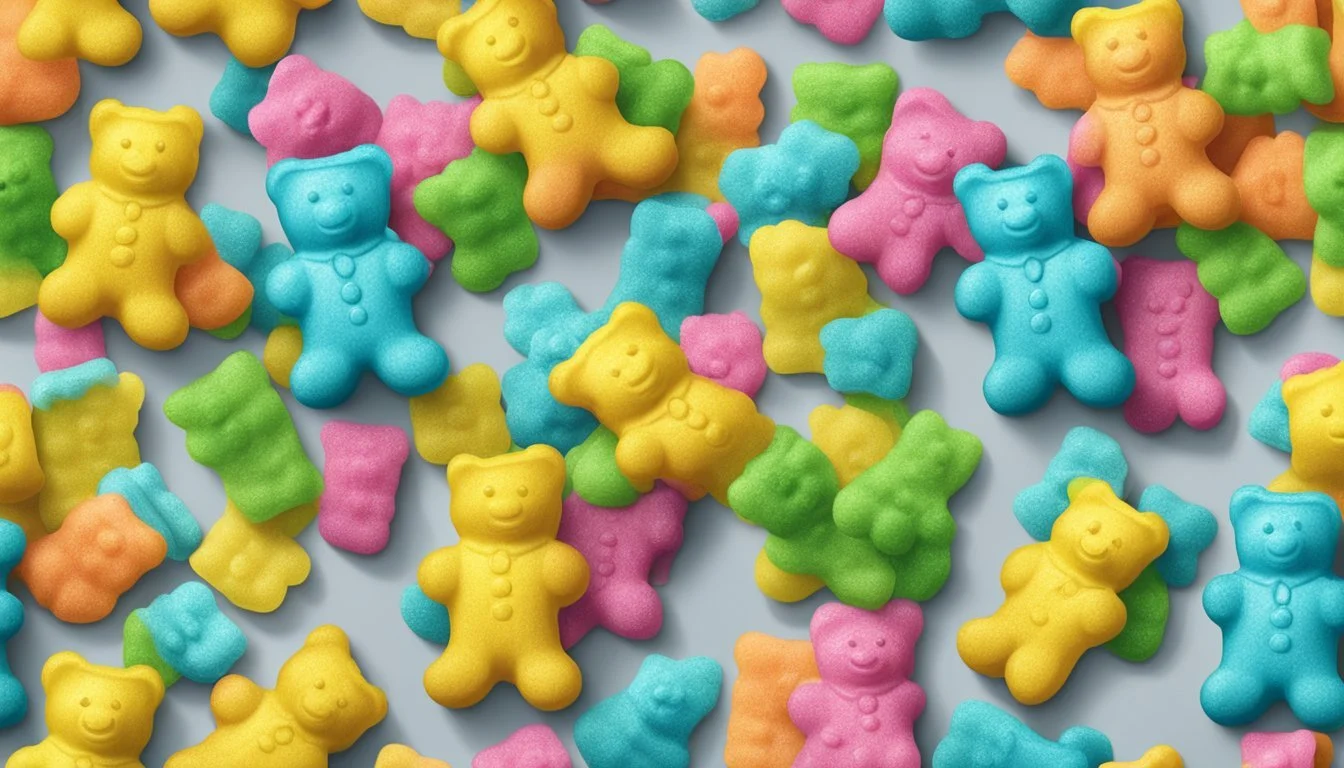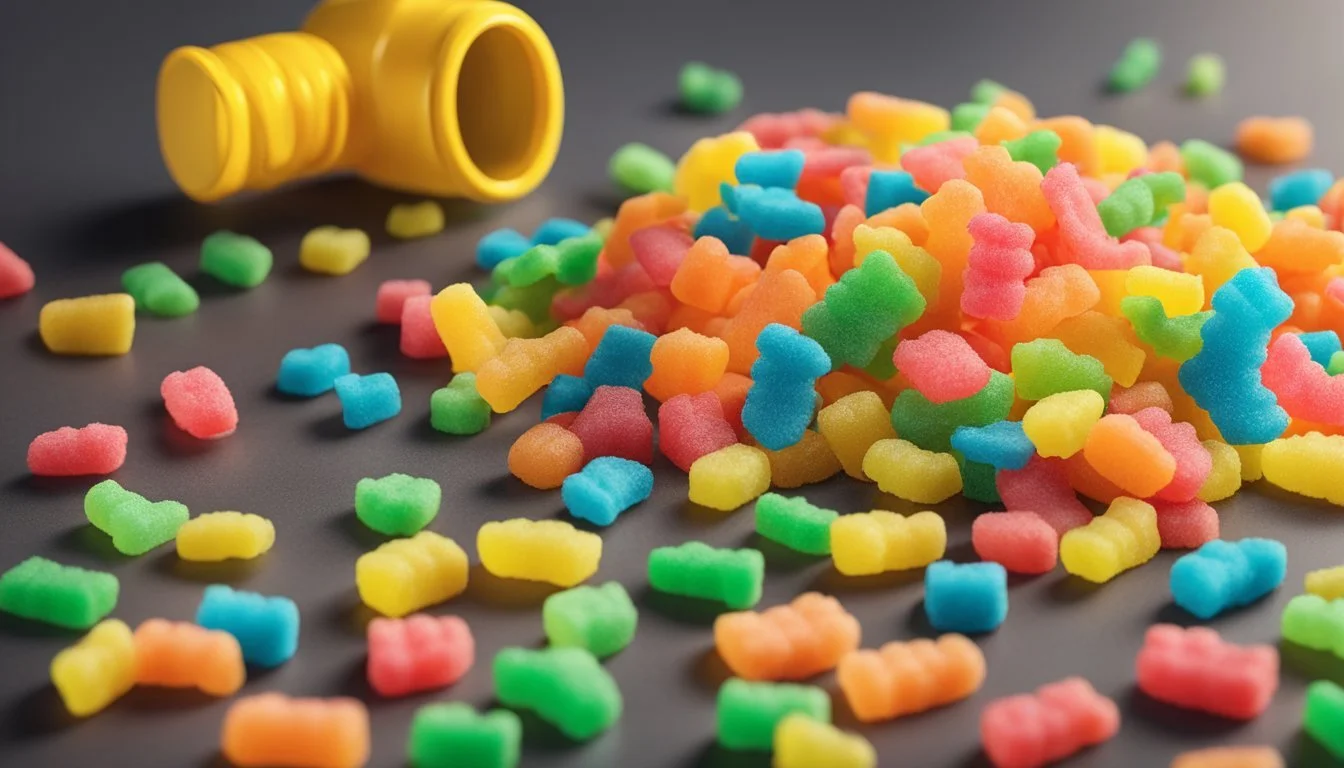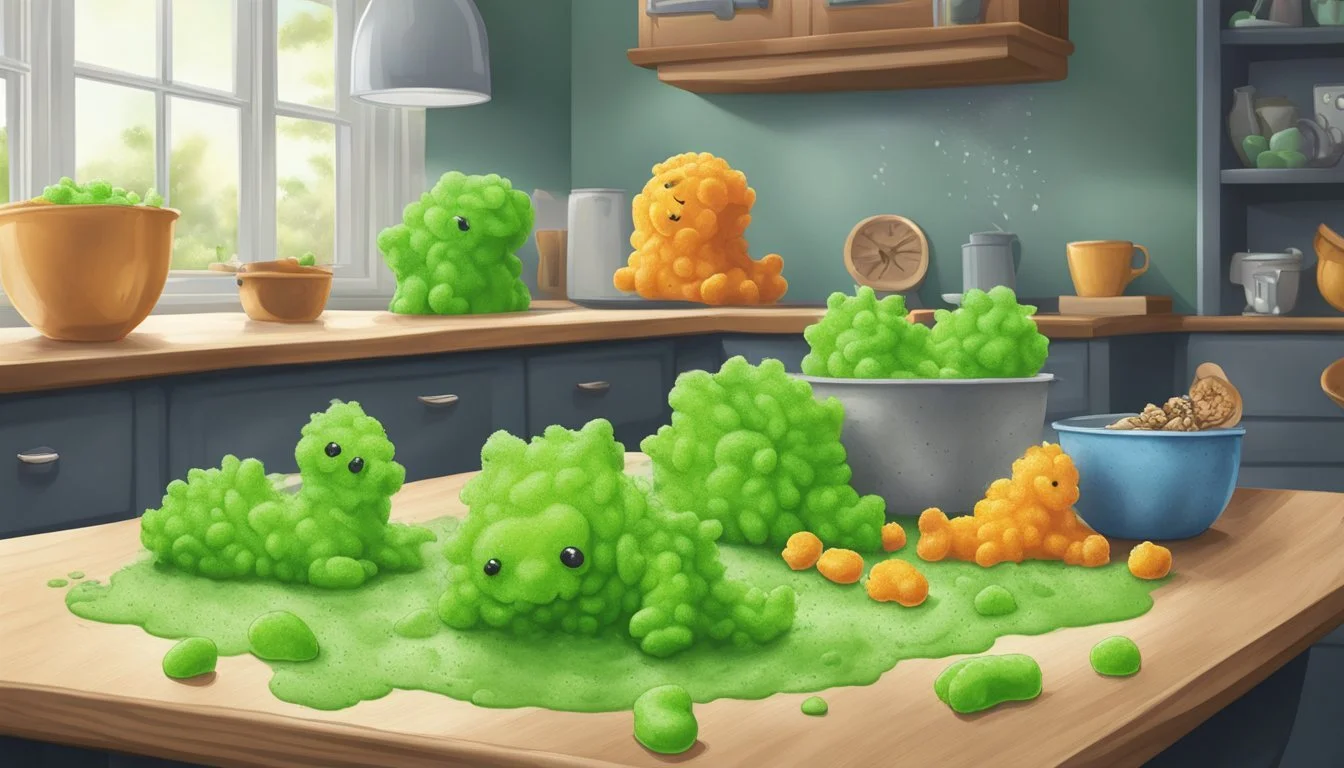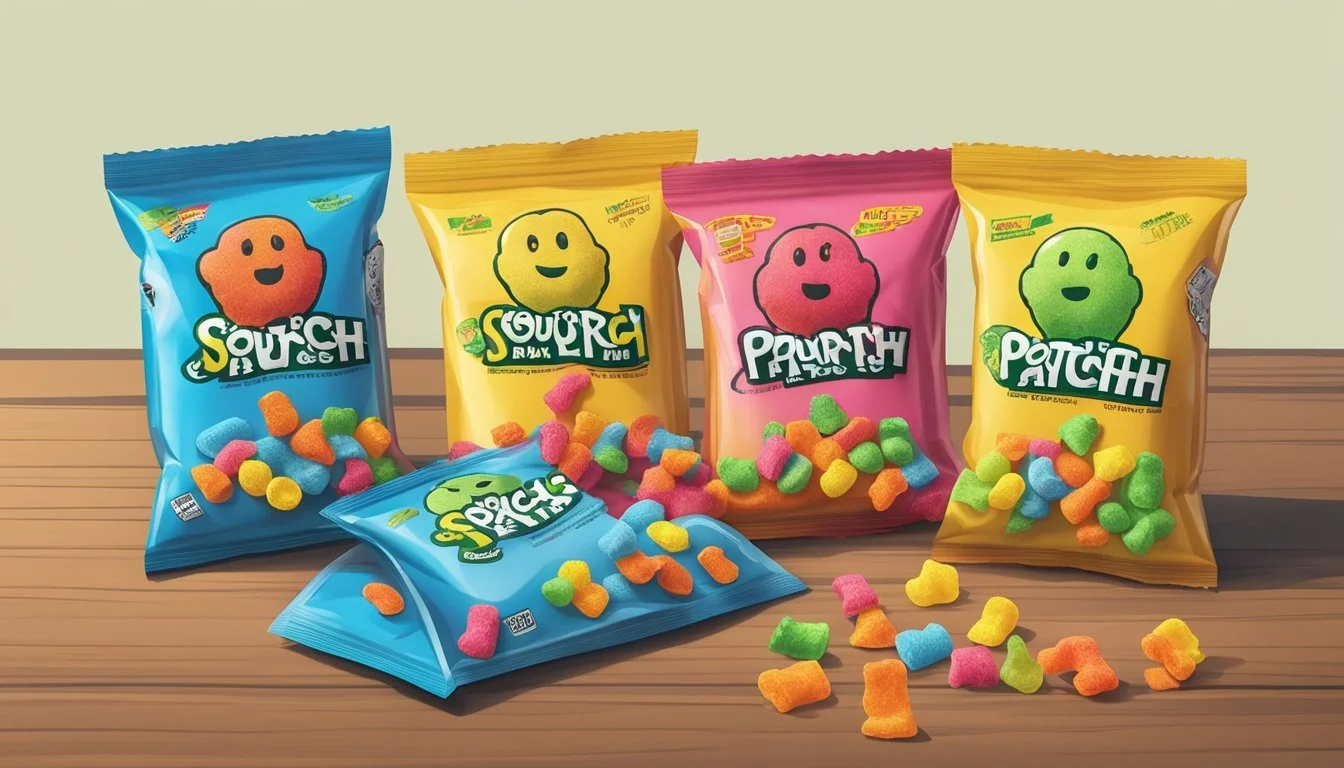How Long Do Sour Patch Kids Last?
Exploring Candy Shelf Life
Sour Patch Kids (how long do sour patch kids last?) have established themselves as a popular candy choice, known for their unique blend of sour and sweet flavors. Their widespread popularity often leads to a common question consumers have: How long do these gummy treats last? Typically, Sour Patch Kids are crafted to endure a considerable duration on the shelf compared to perishable goods, making them a convenient treat that can be stored and enjoyed over time.
The longevity of Sour Patch Kids is attributed to their sugar content and lack of moisture, both of which act as natural preservatives. When stored in proper conditions, which entail a cool and dry environment, these candies can maintain their quality for approximately one year. It is crucial to consider that while the candies may not technically expire in the conventional sense, the optimum consumption period is suggested by the "best by" date marked on the packaging. This date is a manufacturer's estimation of when the product will likely be at its peak quality.
Changes in texture and flavor intensity can occur over time, even when Sour Patch Kids are stored correctly. The sour coating, which is a blend of citric and tartaric acids with sugar, might lose its punch, and the gummies could harden. Consumers should rely on their senses to assess the quality of the candy and determine its suitability for consumption past the indicated "best by" date. While a decline in texture and taste can be expected, it generally does not mean the product is unsafe to eat beyond this period, provided it has been stored adequately.
Understanding Sour Patch Kids
Sour Patch Kids, a popular sour then sweet candy, have intrigued taste buds across the globe. They consist of a unique blend of ingredients that give them their distinctive flavor profile and are available in a wide variety of flavors and types, catering to diverse palates.
Composition and Ingredients
Sour Patch Kids are primarily made of sugar, which is the core ingredient responsible for their sweet taste. They are coated with a combination of citric acid (how long does citric acid last?) and tartaric acid, which provide the initial sourness. Each piece of candy contains various flavors and colors added to create the recognizable and beloved Sour Patch Kids characters.
Varieties and Flavors
There is a broad selection of Sour Patch Kids, with flavors ranging from the original lemon, lime, orange, and cherry to more exotic and seasonal varieties. The brand has expanded its line to include:
Sour Patch Kids Original
Sour Patch Kids Watermelon
Sour Patch Kids Extreme
Limited Edition flavors depending on the season or region
Each variety maintains the signature sour-to-sweet taste with unique twists.
Global Availability
Sour Patch Kids originated in Canada under a different name, but they gained massive popularity in the United States after being introduced in 1985. Since then, their availability has spread, creating a global presence. They can now be found in most countries, often with region-specific flavors that align with local tastes. Despite its universal appeal, Sour Patch Kids have not ventured into themes involving aliens; they have rather stayed true to their playful, childlike imagery.
Shelf Life Determinants
The shelf life of Sour Patch Kids is influenced by several environmental factors that can either preserve their quality or expedite their decline. These factors include temperature, moisture, and light exposure.
Role of Temperature
Temperature plays a critical role in maintaining the quality of Sour Patch Kids. Ideal conditions for preserving their shelf life include storing them in a cool, dry place where the temperature is consistent. Heat fluctuations can lead to melting and sticking, which degrades the candy's texture and taste.
Impact of Moisture
Moisture is a detrimental element when it comes to the shelf life of Sour Patch Kids. The presence of moisture can lead to a loss of the candy's signature texture and can also encourage microbial growth. To maximize freshness, the candy should be stored in an environment with low humidity levels.
Light Exposure Considerations
While less of a factor than temperature and moisture, light exposure can also affect the quality of Sour Patch Kids. Continuous exposure to light, particularly sunlight, can lead to fading of the vibrant colors. It is advisable to store the candies in a dark place, away from direct light sources, to maintain their appearance and prevent any potential change in flavor profile.
Proper Storage Techniques
Ensuring the longevity and freshness of Sour Patch Kids requires attention to storage conditions. Storing these candies improperly can lead to a loss in quality long before they reach the end of their shelf life.
Airtight Containers
The use of airtight containers is crucial for preserving the quality of Sour Patch Kids. These containers prevent the ingress of moisture and other contaminants. A plastic bag can suffice, but must be sealed tightly. For best results, one should transfer the candies into a container that can be sealed effectively.
Materials: Glass jars, plastic Tupperware, or metal tins with a secure closure
Effectiveness: Preserves freshness and texture by keeping out air and humidity
Refrigerating vs. Freezing
Refrigerating Sour Patch Kids can help to prolong freshness in a more consistent temperature compared to room temperature, especially in warmer climates. However, the cold may alter the texture, making the candies firmer than usual.
Refrigerator Temperature: 50-55°F (10-13°C) preserves without altering texture too much
Freezing: Not recommended, as extreme temperatures can change the candy's structure
Maintaining Optimal Conditions
Keeping Sour Patch Kids in a cool and dry area is the best way to maintain their quality. Exposure to high temperatures or direct sunlight can cause the candies to melt or become sticky.
Room Temperature: Around 68–72°F (20–22°C) is ideal for storage
Humidity: Best kept around 50%, as excessive moisture can lead to clumping
By adhering to these specific storage techniques, one can extend the enjoyment and flavor of Sour Patch Kids well beyond their "best by" date.
Expiration and Best-By Dates
When purchasing Sour Patch Kids, consumers encounter dates marked on the packaging which act as guides for consumption. Understanding these dates is crucial to enjoying the candy at its best and ensuring food safety.
Interpreting the Dates
The Best If Used By date on a package of Sour Patch Kids signifies the timeframe during which the product is expected to maintain peak quality and flavor. It is not a safety date. Expiration dates are not typically used for candies like Sour Patch Kids, but when present, it indicates when the candy might begin to degrade in quality beyond the manufacturer's ambition.
Manufacturer's Estimates
Manufacturers provide a "best by" date which often reflects the period within which the candy retains its optimum sourness and sweetness. Beyond this date, the texture may change; Sour Patch Kids could become harder or lose their vibrant taste. However, these candies do not expire in the traditional sense that perishable foods do, and are generally still safe to eat but with potentially diminished quality.
Food Safety Considerations
From a food safety perspective, Sour Patch Kids are unlikely to become unsafe after the "best by" date, as they contain low moisture and are high in sugar, both of which are natural preservatives. The most important factors affecting safety and quality over time include storage conditions; they should be kept in a cool, dry place to prevent spoilage and extend their shelf life.
Assessing Candy Quality
When evaluating the quality of Sour Patch Kids, one should pay attention to texture and freshness, as well as any signs of spoilage, which indicate whether the candy is past its prime.
Texture and Freshness
The ideal texture of Sour Patch Kids is a balance between chewy and firm. Freshness is conveyed through the candy's resilient feel and the distinct sour coating that should not be damp or melted. Longevity is often maintained when these candies are stored properly, in cool and dry conditions. Compromises in texture—such as hardness or a gritty sour coating—often denote staleness or exposure to improper temperatures.
Signs of Spoilage
Spoilage is typically detected by using the senses. Visual signs include discoloration or the presence of mold. The candy should not exhibit an off-smell; any unexpected odors can indicate that the Sour Patch Kids have gone bad. The taste should always be the anticipated sweet and sour blend. Any deviation from the expected taste or a complete lack of flavor suggests the candy may be expired. Sour Patch Kids generally retain quality for about 12 months, but consuming expired candy, while often safe, may result in a less than ideal sensory experience.
Effects of Improper Handling
Improper handling of Sour Patch Kids can significantly shorten their shelf life and affect their quality. To maintain their intended texture and flavor, special attention should be given to temperature and storage conditions.
Avoiding Heat Damage
Sour Patch Kids are sensitive to high temperatures which can cause them to melt or stick together. Direct sunlight and hot environments should be avoided to prevent heat damage. When sour candies are exposed to heat, they can lose their distinct texture and potentially their taste.
Preventing Candy Bloom
Candy bloom is another concern and often results from moisture getting into the candy package. A heavy-duty freezer bag can be instrumental in preventing bloom when freezing the candies, as it keeps moisture out effectively. Without proper storage, Sour Patch Kids can develop a white, powdery coating, which is usually a fat or sugar bloom, not mold. Bloomed candies are usually safe to eat but can have an altered texture and appearance.
Comparative Shelf Life
In examining the longevity of Sour Patch Kids, it's important to consider how their shelf life compares to other confections, such as chocolates and various gummy candies.
Sour Candies vs. Chocolate
Sour Candies:
Gummy Sour Candies (including Sour Patch Kids): Typically last 6 months to 1 year if stored properly.
Hard Sour Candies: Can last up to 1 year, with quality preservation being paramount.
Chocolate:
Dark Chocolate: Has a shelf life of up to 2 years.
White and Milk Chocolate: Generally last 6 months to 1 year.
A critical factor influencing shelf life is the storage conditions. Sour candies and chocolates should be kept away from heat, moisture, and light to prevent degradation.
Alternative Confectionery Items
Nuts:
When added to candies or as a standalone snack, nuts have varied shelf lives. Typically, they last several months when kept in air-tight containers and can extend past their best-by date if stored correctly.
Baked Goods:
Cookies and similar items: Usually have a shorter shelf life compared to candies, lasting a few weeks to a few months, and are best when consumed fresh.
General Considerations:
Shelf life isn't just about safety but also quality, including taste and texture.
Sour gummies like Sour Patch Kids remain safe to eat past the "best by" date if unopened and stored properly, but their quality may decline.
These comparisons show that while sour candies like Sour Patch Kids have a considerable shelf life, factors such as storage conditions and ingredients can greatly influence the longevity of confectionery items.
Brand and Product Insights
The Sour Patch Kids brand has seen significant success and expansion, from its origins to a diverse range of associated products and collaborations, reflecting the evolving tastes and interests of consumers.
Jaret International History
Jaret International, originally a creator of the confectionery Mars Men, introduced Sour Patch Kids to the North American market in the late 1970s. The candy was initially shaped like alien heads, similar to Mars Men, before taking on the childlike form we recognize today. The name draws a subtle connection to the popular Cabbage Patch Kids dolls. It wasn't long before these sour-then-sweet treats gained a zealous following, thanks to their unique flavor profile that cleverly balances initial tartness with a subsequent sweet finish.
Associated Products and Collaborations
Mondelez International, the parent company owning Sour Patch Kids, has explored various product collaborations to keep the brand fresh and integrated with contemporary trends. In recent years, they have joined forces with Oreo to create a limited-edition cookie featuring a sweet and tangy flavor cream. Moreover, the brand has extended its reach into the frozen desserts category with Sour Patch Kids Ice Cream and a partnership with Chips Ahoy! for ice cream flavored with chunks of the candy. Such initiatives exemplify Mondelez's strategy to innovate and cater to the evolving palette of consumers, driving growth in different confectionery and snack segments. One of their novel promotional tactics included launching a mystery flavor to engage the community, fostering excitement and interaction from the audience.
Through strategic product development and inventive collaborations, Sour Patch Kids continues to cement its position in the confectionery market as a brand capable of adapting to changing consumer preferences while maintaining a distinct and beloved flavor experience.
Consumer Advice
When it comes to maintaining the freshness and flavor of Sour Patch Kids, consumers should consider both purchasing strategies and usage practices. This guidance ensures enjoyment of the candy as intended by its creators, like Frank Galatolie, who invented the confection for Cadbury.
Purchasing Recommendations
When purchasing Sour Patch Kids, consumers should:
Check the "Best Before" date: Ensure the product is within its optimal consumption period for peak flavor.
Inspect the packaging: Select packages that are sealed properly to prevent moisture and other contaminants from affecting the candy's quality.
Usage And Enjoyment Tips
To maximize enjoyment of Sour Patch Kids, consumers are advised to:
Store properly: Keep the candy in cool and dry conditions. For areas with hot or humid climates, storing in a heavy-duty freezer bag in the refrigerator may extend freshness.
Consume within an appropriate timeframe: While unopened, Sour Patch Kids generally remain fresh up to one year. Once opened, strive to consume them within a week to prevent them from becoming hard and stale.
Handle with care: If the candy has been stored for an extended period post the "Best Before" date, inspect with senses prior to consumption to ensure food safety.
By following these straightforward tips, consumers can ensure that their experience with Sour Patch Kids remains a pleasant treat, as intended by their inventors.

